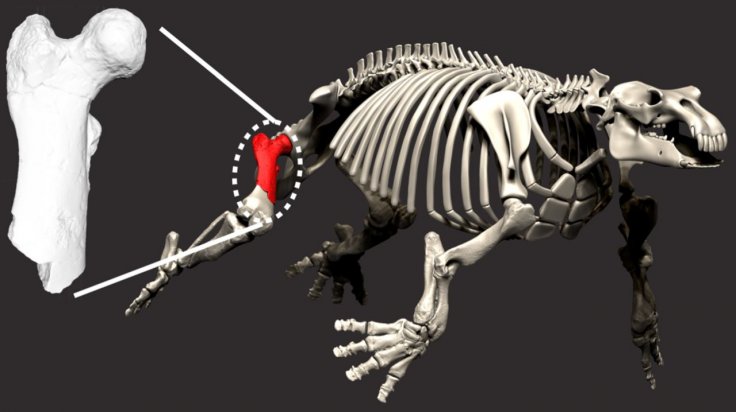
There are few discoveries which previously appeared as just an artefact but after years of research, scientists revealed the actual history of it. A similar incident took place in Japan, where during 1950s dam workers found a large bone but no one knew what it was actually. Most of 6the local people hardly paid attention to it and people used to believe that that bone belongs to a dinosaur.
But when that interesting artefact landed on the hands of palaeontologists, they conducted a research on it. Recently the group of researchers have found that the bone has no relation to dinosaurs but it is actually the thigh bone of a long-extinct aquatic creature or herbivore belonging to the genus Paleoparadoxia.
This particular creature is not as old as dinosaurs, but it is known as one of those interesting creatures that ever have roamed in our earth. As per the experts Paleoparadoxia, which is a hippo-like creature inhabited the northern Pacific coastal region almost 20 to 10 million years ago.

Many decades ago when it was first discovered by the workers, people actually did not understand its historic value and placed it as a display in a small village hall. Several years later, when a fire broke out at that area, finally that bone ended up in the back of a museum along with an original note, which was written by its discoverers, who described this bone, from their understanding as a dinosaur femur.
In 2017, scientists first looked at that bone closely and started their research process. After comparing the huge bone with the same group of animals, researchers came to know that it doesn't belong to a dinosaur but the fossil was indeed a leftover from an ancient herbivore.
![Life reconstruction of Paleoparadoxia from Tsuchiyu Onsen Town. This artistic image was constructed based on a combination of photogrammetric 3D models of original skeletal fossils by using PhotoScan v. 1.4.0 [46], including EESUT-PV-0001 (figure 5), and Life reconstruction of Paleoparadoxia from Tsuchiyu Onsen Town. This artistic image was constructed based on a combination of photogrammetric 3D models of original skeletal fossils by using PhotoScan v. 1.4.0 [46], including EESUT-PV-0001 (figure 5), and](https://data.ibtimes.sg/en/full/23615/life-reconstruction-of-paleoparadoxia-from-tsuchiyu-onsen-town-this-artistic-image-was-constructed-based-on-a-combination-of-photogrammetric-3d-models-of-original-skeletal-fossils-by-using-photoscan-v-1-4-0-46-including-eesut-pv-0001-figure-5-and.jpg?w=736)
In the research paper, which was published in the Royal Society Open Science, scientists clearly stated that this bone in approximately 15.9-million-years-old. Even though the existence of this sea creature has washed off from earth many years ago, but experts claimed that these beats would have lived much like modern aquatic herbivores. They also said that these animals used to eat sea-grasses and were capable of walking under the water but sometimes to grab fresh air they used to come on the surface for a while.









